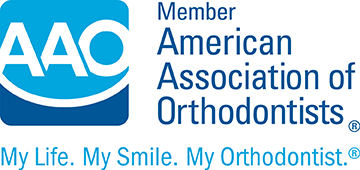EARLY ORTHODONTIC TREATMENT FOR CHILDREN
 The American Association of Orthodontists recommends that your child see an orthodontist for his or her first check up by age 7. An orthodontist can identify whether or not your child will need orthodontic treatment and when. The orthodontist is the most qualified person to help identify your child’s orthodontic need. Dr. Kiefer would love to help you through this process.
The American Association of Orthodontists recommends that your child see an orthodontist for his or her first check up by age 7. An orthodontist can identify whether or not your child will need orthodontic treatment and when. The orthodontist is the most qualified person to help identify your child’s orthodontic need. Dr. Kiefer would love to help you through this process.
Early Orthodontic Treatment also known as Phase One Treatment begins around grade 3 or 4 and depends on each individual child. The primary goal of early orthodontic treatment is to correct certain jaw growth problems (such as a narrow upper jaw) or bite problems (such as an underbite). Early treatment also helps to create pathways of eruption for permanent teeth to come in properly, lessening the chance for removal of permanent teeth as the child matures.
Early Orthodontic Concerns
- Early loss or late loss of baby teeth
- Difficulty chewing or biting
- Mouth breathing
- Thumb or finger sucking habit persisting around age 5
- Speech difficulties
- Missing teeth
- Extra teeth
- Teeth sticking out too far and away from each other
- Teeth that don’t meet properly in the front or back
- The jaw shifts to the side as your child opens and closes
- A crossbite, teeth are stuck behind or in front of the opposite tooth
- Crowded front teeth at age 7
- Snoring and breathing concerns
 The cause of orthodontic problems such as crowding, spacing, jaw growth problems, protruding teeth and bad bites are hereditary in nature. They can also be made worse by early or late loss of baby teeth, thumb sucking habits or even trauma. It is extremely important to realize that certain orthodontic problems corrected during Phase One Treatment are more stable for the remainder of the child’s lifetime. Furthermore, certain orthodontic treatments require growth to achieve the intended correction. Harnessing a child’s growth can help establish a healthy and beautiful bite in the most efficient manner possible, all the more reason to establish care with an excellent orthodontist who can guide you as your child grows.
The cause of orthodontic problems such as crowding, spacing, jaw growth problems, protruding teeth and bad bites are hereditary in nature. They can also be made worse by early or late loss of baby teeth, thumb sucking habits or even trauma. It is extremely important to realize that certain orthodontic problems corrected during Phase One Treatment are more stable for the remainder of the child’s lifetime. Furthermore, certain orthodontic treatments require growth to achieve the intended correction. Harnessing a child’s growth can help establish a healthy and beautiful bite in the most efficient manner possible, all the more reason to establish care with an excellent orthodontist who can guide you as your child grows.
If your child is showing signs of needing orthodontic care, or if your dentist has encouraged you to visit the orthodontist, please contact our practice to schedule a complimentary consultation with Dr. Kiefer. We’d love to meet you!
TWO-PHASE ORTHODONTIC TREATMENT
Two Phase Orthodontic Treatment allows the orthodontist to create an ideal chance for a healthy functional bite that will remain stable throughout your child’s life. We have cleverly titled them Phase I and Phase II Orthodontic Treatment!
The orthodontist can guide your child’s jaw growth and create pathways for the permanent teeth. Waiting to treat certain early orthodontic problems can result in the need for a more involved treatment later in life that may not actually completely fix your smile.
Phase I Treatment
The primary goal of Phase I treatment is to ensure the upper and lower jaw widths fit properly with each other. The other primary goal of Phase I Treatment is to help the upper and lower jaws develop in a way that will accommodate the eruption of all of the permanent teeth.
Children often exhibit early signs of jaw problems and crowding at a young age. Specifically, an upper jaw that is too small or narrow can be recognized at an early age and treated most efficiently when your child is young. Treating early is the best time for a lasting correction. Crowding can also be addressed to help prevent the need for extraction of permanent teeth as the child matures.
After Phase I Treatment is complete, the teeth are not in their final positions. Your child will continue to grow and mature and so will his or her teeth. During this time of maturation, we’ll invite you to join Dr. Kiefer’s Eye Tooth Club and ask you to visit us every six to twelve months, depending on what is needed. Dr. Kiefer will keep her eyes on your child’s teeth as he or she matures to ensure things are happening the way they should and to assess whether or not your child will benefit from Phase II Treatment and when. Typically when children Phase I treatment, they will also need Phase II treatment.
Phase II Treatment
The goals of the second phase of treatment are specific and the TIMING of Phase II treatment is of utmost importance. Dr. Kiefer uses skeletal growth indicators to determine WHEN your child is ready for Phase II treatment and it is INDIVIDUAL for each patient. Dr. Kiefer’s treatment plans are designed with the patient’s optimum facial esthetics in mind. It is extremely important to ensure your teeth fit properly with your face and in your smile. In addition, there are specific goals to achieve perfect dental alignment, close extra spaces, eliminate crowding or turned teeth, and get an ideal front, back, side to side and vertical relationship of the bite that will remain stable for years to come. The second phase of treatment usually begins when most or all of the permanent teeth have erupted and usually requires braces or aligners on upper and lower teeth. However, it is very common that the skeletal growth and dental development do not match each other. Dr. Kiefer will be happy to review all of this information with you in person as it pertains to your case.
Retainers – SLEEP TIME FOR A LIFETIME!
Retainers are worn after Phase I Treatment and Phase II Treatment. The design and wear schedule for the retainers will differ between each phase of treatment and from patient to patient. Keep in mind, Dr.Kiefer recommends RETAINERS FOR LIFE. In the beginning, retainers are worn 22-24 hours per day. After a period of time, Dr. Kiefer recommends that you wear your retainers SLEEP TIME FOR A LIFETIME and the KFO Smile Team will guide you through this important process.
